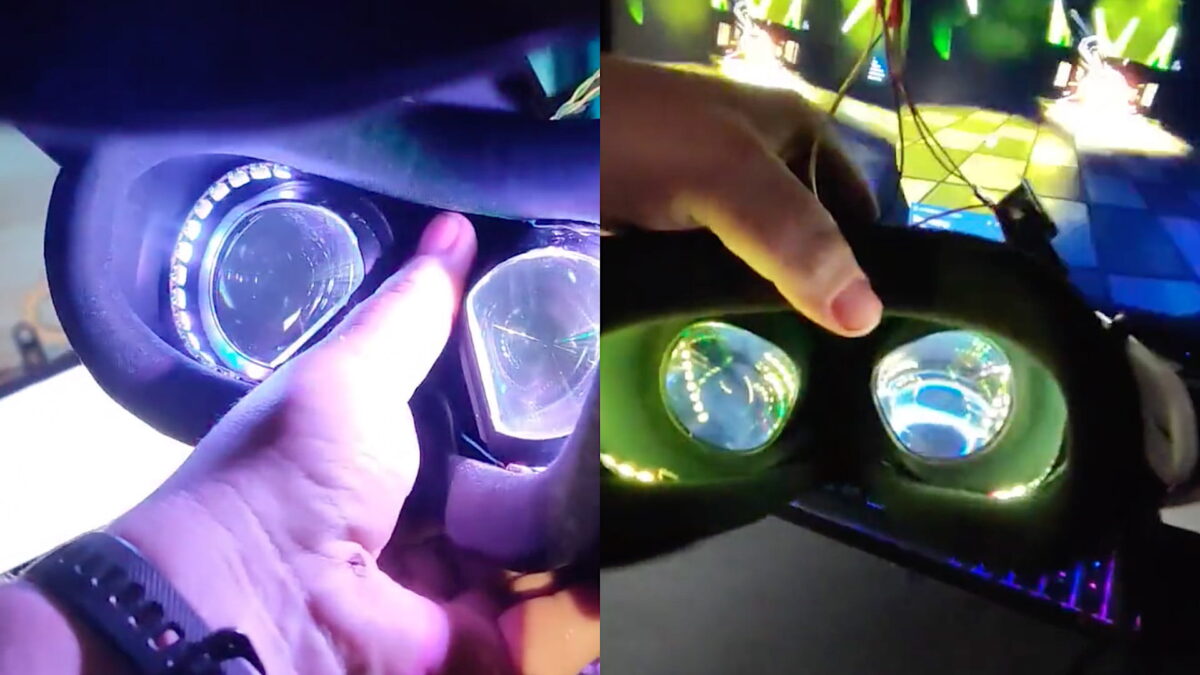Valve Index ambilight hack gives "impressive" boost to immersion

A VR enthusiast installed additional LEDs in his Valve Index to simulate a wider field of view. He says it works "absolutely incredible."
VR headsets have come a long way in the past decade: They've gotten smaller and thinner, they've got tracking built into the housing, and they've become partially standalone, meaning they don't require an external device.
Despite these advances, one important factor has remained the same in almost all devices: the field of view, which is still between 90 and 120 degrees. This has to do with the challenges of lens design and the compromises in other areas of headset design that would have to be made to achieve a larger field of view.
Last summer, Meta's CTO, Andrew Bosworth, said that increasing the field of view for the standalone Quest devices would be costly in terms of performance, because it would add unused pixels that consume as much power as the pixels that are clearly visible.
Enhance immersion with ambient light
VR enthusiast, musician and engineering graduate ShodahVR is currently experimenting with an unusual solution to this problem, using ambient light inside the VR headset to simulate a wider field of view, similar to ambilight TVs. He documents his progress on Twitter.
ShodahVR integrated a chain of LEDs inside his Valve Index headset. These reproduce the color of the peripheral images rendered by SteamVR. When wearing the headset, this creates the illusion of a wider horizontal field of view.
According to ShodahVR, he has completed his VR Ambilight trial and found it to be incredible. He noted that it added a significant amount of "presence," and even in its first iteration without a diffuser, the pretend field of view was highly noticeable.
My "VR Ambilight" mock up is done, it feels ABSOLUTELY INCREDIBLE, the "Fake FOV" boost is so trippy, I just need to diffuse the little better then it's time to 3D print a fully enclosed facial interface. @Thrilluwu Orion club pops with this! Making one for the Index now. pic.twitter.com/p4MktC3p0h
— ShodahVR (@Shodah10) February 18, 2023
He plans to add a layer of gray plastic (called a diffuser) over the LEDs to soften the light and prevent reflections from the lenses. After that, he plans to use a 3D printer to print a sealed interface module that can be easily installed in the Valve Index. For power, Shodah plans to use the USB port on the front of the VR headset.
An old idea that never became a product
If the experiment with Valve Index is successful, the VR enthusiast wants to try the same with Meta Quest 2, which should be much more difficult since it's a standalone headset. ShodahVR is considering installing tiny cameras and a battery.
The idea of VR ambient light is not entirely new. Microsoft was already researching VR ambilight in 2016 (see video), and Apple has also filed patents for it.
The fact that the idea hasn't caught on is likely due to tradeoffs of a different kind. Ambilight adds very little in the way of processing power, but it does add weight and heat to the VR headset. Two factors that severely limit headset design.
Note: Links to online stores in articles can be so-called affiliate links. If you buy through this link, MIXED receives a commission from the provider. For you the price does not change.